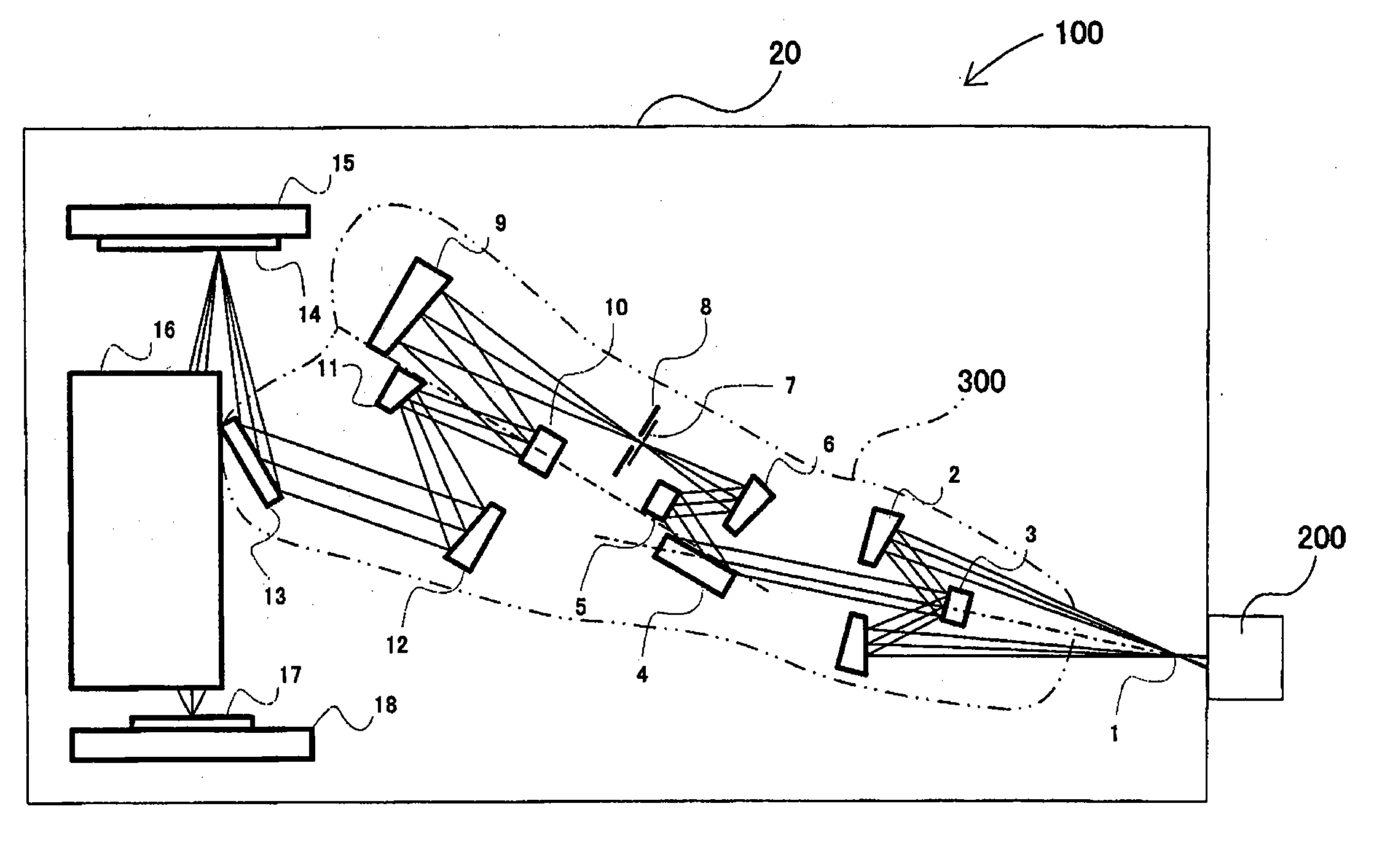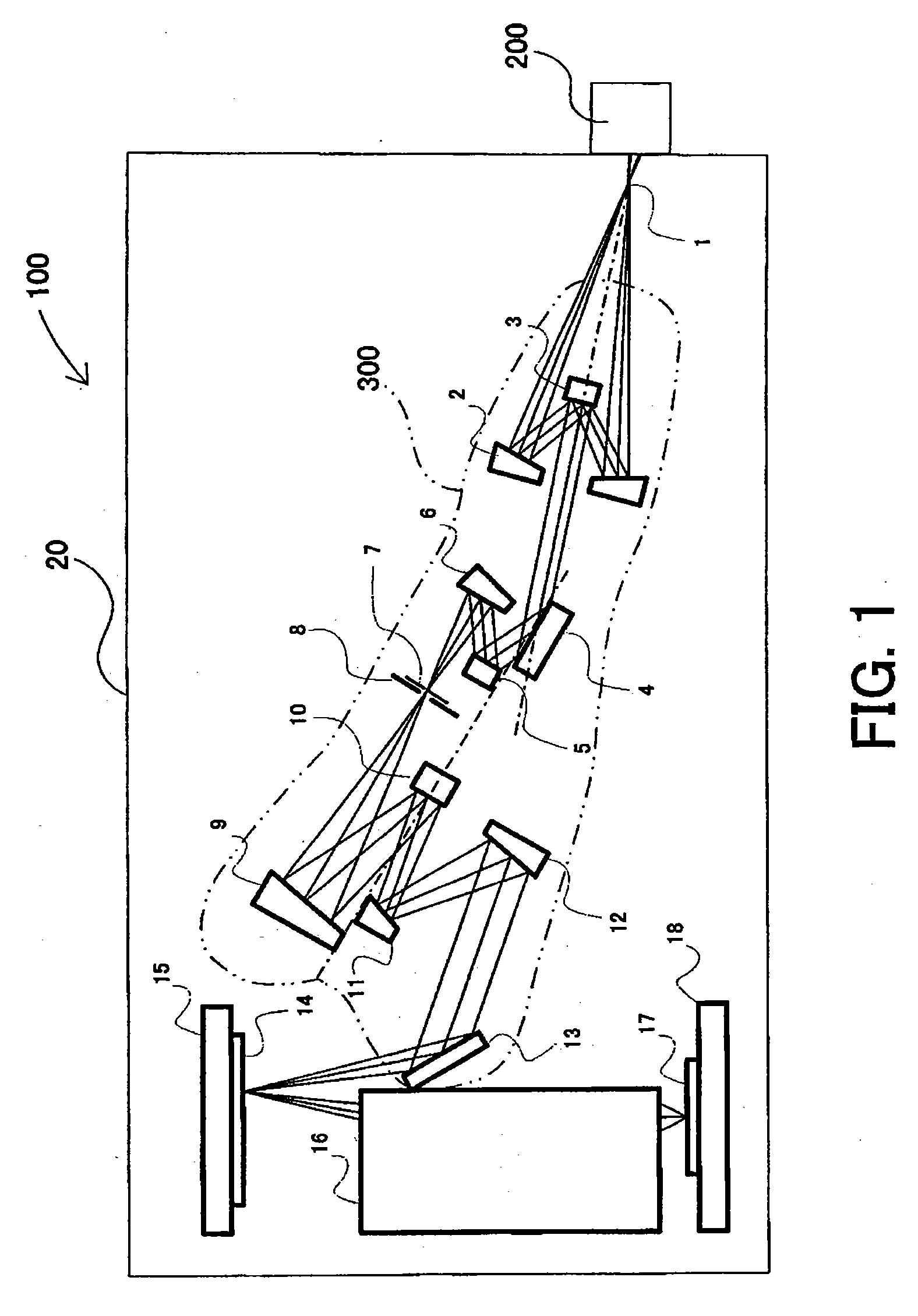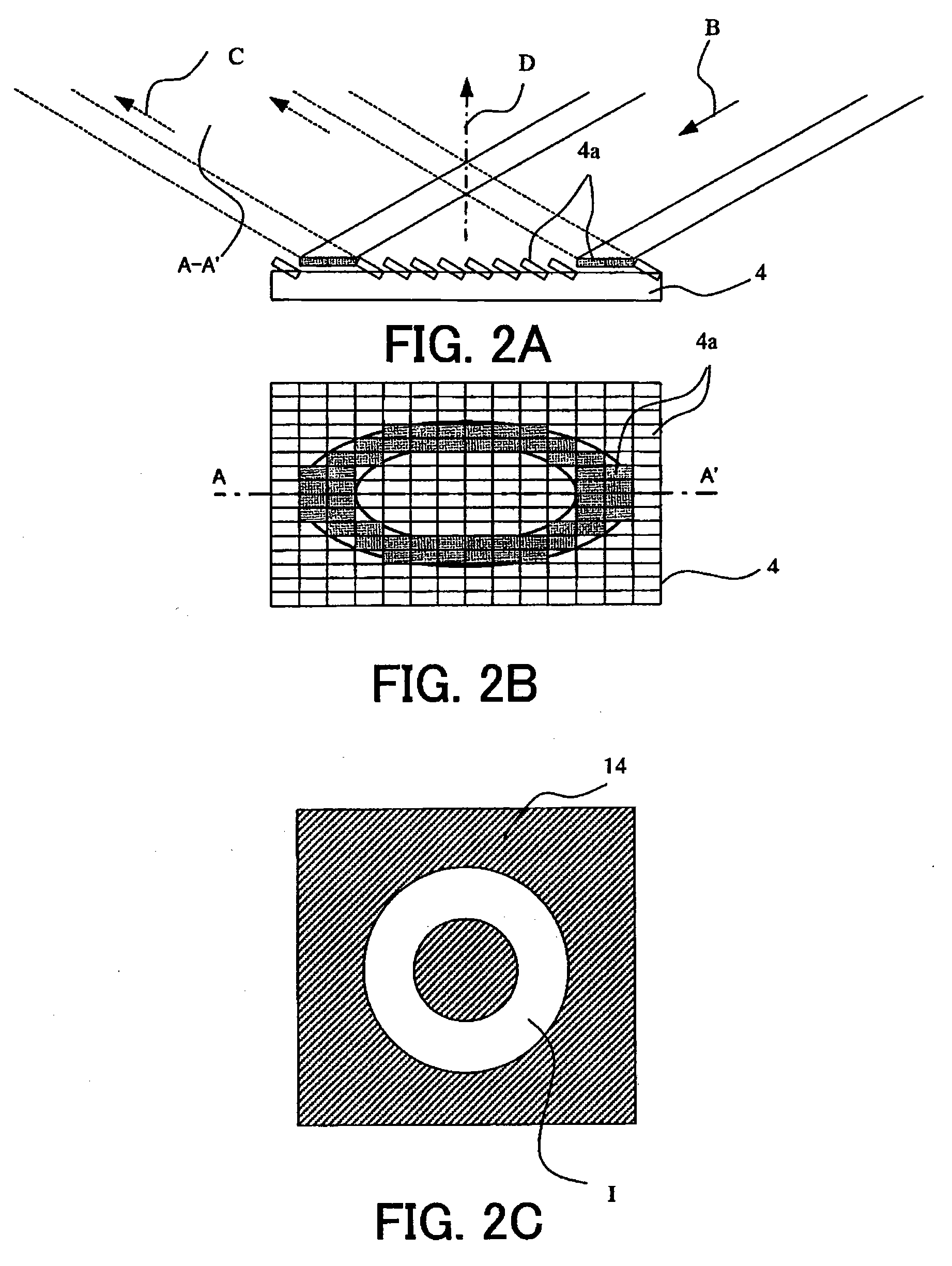Illumination optical system, exposure apparatus, and device manufacturing method
an optical system and exposure technology, applied in the field of illumination optical systems, can solve the problems of destroying the degree of vacuum in the vacuum area, enlarge the exposure apparatus and thus not be realistic, and cannot provide an arbitrary and continuous illumination condition
- Summary
- Abstract
- Description
- Claims
- Application Information
AI Technical Summary
Problems solved by technology
Method used
Image
Examples
first embodiment
[0022]FIG. 1 shows a schematic structure of a semiconductor exposure apparatus that includes an illumination optical system according to a first embodiment of the present invention. The exposure apparatus 100 of this embodiment is a projection exposure apparatus that provides step-and-scan exposure using the EUV light that has, for example, a wavelength of 13.4 nm, as an illumination light for exposure.
[0023] The exposure apparatus includes a light source section 200, an illumination optical system 300, a reflection type reduction projection optical system 16, a mask stage 15 that holds a reflection mask (or reticle) 14 as an original, and a wafer stage 18 that holds a semiconductor wafer 17 as a substrate to be exposed. The mask stage 15 and the wafer stage 18 are connected to a controller (not shown) so that the controller can control their driving. The mask stage 15 positions the mask 14, and the wafer stage 18 positions the wafer 17. The light source section 200 and the illumin...
second embodiment
[0051] Referring now to FIGS. 7 and 8, a description will be given of an embodiment of a device manufacturing method using the above exposure apparatus 100 according to the first embodiment.
[0052]FIG. 7 is a flowchart for explaining how to fabricate devices (i.e., semiconductor chips such as IC and LSI, LCDs, CCDs, and the like). Here, a description will be given of the fabrication of a semiconductor chip as an example.
[0053] Step 1 (circuit design) designs a semiconductor device circuit. Step 2 (mask fabrication) forms a mask 14 having a designed circuit pattern. Step 3 (wafer preparation) manufactures a wafer 17 using materials such as silicon.
[0054] Step 4 (wafer process), which is also referred to as a pretreatment, forms actual circuitry on the wafer 17 through lithography using the mask 14 and wafer 17.
[0055] Step 5 (assembly), which is also referred to as a posttreatment, forms into a semiconductor chip the wafer 17 formed in Step 4 and includes an assembly step (e.g., di...
PUM
 Login to View More
Login to View More Abstract
Description
Claims
Application Information
 Login to View More
Login to View More - R&D
- Intellectual Property
- Life Sciences
- Materials
- Tech Scout
- Unparalleled Data Quality
- Higher Quality Content
- 60% Fewer Hallucinations
Browse by: Latest US Patents, China's latest patents, Technical Efficacy Thesaurus, Application Domain, Technology Topic, Popular Technical Reports.
© 2025 PatSnap. All rights reserved.Legal|Privacy policy|Modern Slavery Act Transparency Statement|Sitemap|About US| Contact US: help@patsnap.com



